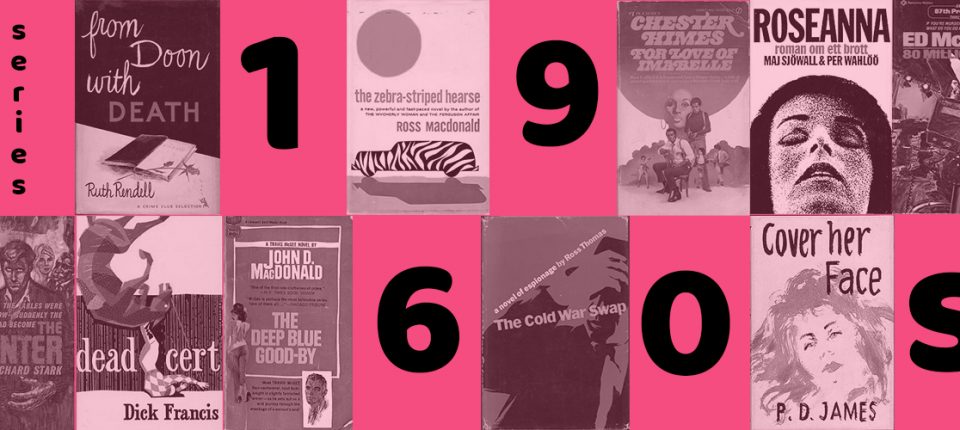This is the first installment of a multi-part series designed to introduce readers (or remind those already familiar) with the essential long-running series for each decade of the later 20th and early 21st centuries. With shelter-in-place our new reality for at least the next few weeks (if not months), there’s never been a better time for making your way through a whole series. Of course, not all series installments are created equal, and we make no claims to know the best in every series, although we guarantee that each of the series highlighted herein is, on the whole, excellent. (Dwyer Murphy, who contributed some of the selections and blurbs below, wants it conveyed that he does claim to know the best of the Travis McGee series.) Each is placed in the decade that we believe defined it the most, and we’re starting with the 1960s, since the first half of the 20th century is easier to look at as a whole.
The 1960s were a tumultuous decade, and the crime fiction of the time reflected the vast changes in attitudes and society. Crime series provide us with a perfect opportunity to track those changes over time, as protagonists evolve and their attitudes towards both crimes and setting continue to move with the times. The 1960s, with its new openness, vast marches, and sexual and political liberation, feels like the opposite of today, where we’ve closed ourselves off even from members of our own families to keep them safe, and find ourselves jealous of orderly countries no matter their methods of control, but that’s perhaps what also makes it a perfect decade to immerse ourselves within. Someday, life will be this open again. And detectives will find it just as confusing.
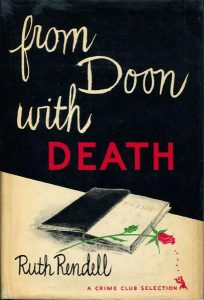
Ruth Rendell’s Inspector Wexford Series
Total Number of Series Installments: 24
First Novel Published: From Doon with Death, 1964
Last Novel Published: No Man’s Nightingale, 2011
Ruth Rendell, like many of the greatest crime novelists, distinguished herself with both stand-alones (including the singular Judgement in Stone) and her long-running Chief Inspector Reginald “Reg” Wexford series, which spanned over five decades and topped out at twenty-four installments. You can see both characters and society evolve over the series—just as one example, Rendell’s debut was considered shocking for its lesbian characters, while the last in her series features a rather ordinary gay couple, going about their rather ordinary business. Conflict within Wexford’s family and workplace mirrors changing the rapidly changing social norms of the Sixties onward, while each mystery functions as both a satisfying puzzle and a window into English society. The plots are also devastatingly personal, often featuring family members turned against each other and long-seething resentments that boil over into murder. The series also excels at exposing the sinister side of humdrum British society, from murder in a retirement community, to murder on a nature walk, reminding us that nowhere is safe in a quaint English village.
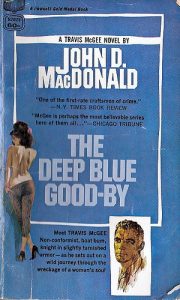
John D. MacDonald’s Travis McGee Series
Total Number of Series Installments: 21
First Novel Published: The Deep Blue Good-by, 1964
Last Novel Published: The Lonely Silver Rain, 1984
It’s hard to imagine a crime fiction series better capturing the decade than John D. MacDonald’s legendary Travis McGee did. McGee spans the quintessentially cool figures of the period—he’s from the Steve McQueen mold, checked out of mainstream society to live on his houseboat in South Florida, harboring a soft spot for the era’s burgeoning youth movement and counter-culture. McGee is a “salvage” man. He has no steady source of income but doesn’t fret too much, as the universe always delivers him a crooked scheme to unravel or a hustler to take on. Start the series from the beginning, as McGee arrives fully formed and The Deep Blue Good-by is a classic, full of poetry, boat parties, sexed-up period-appropriate musings, and an unforgettable villain. You can learn more about McGee, and John D. MacDonald’s Florida here. (Dwyer Murphy)
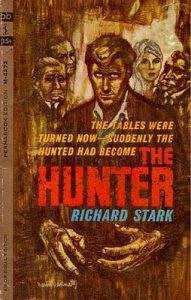
Richard Stark’s Parker Series (aka Donald E. Westlake)
Total Number of Series Installments: 24 (plus stories)
First Novel Published: The Hunter, 1962
Last Novel Published: Dirty Money, 2008
Writing under the Stark pseudonym, Westlake introduced a new and groundbreaking kind of character at the start of the decade, with The Hunter. Parker is not charming, loving, or sympathetic in any way. He’s an outcast, operating at the very edges of society and recognizing few or any of its ethics or rules. He kills and steals without remorse and upholds a very strict, skeleton code of his own. But his adherence to professionalism, to the way things are and ought to be done, ends up a kind of mesmerizing religion, with Stark/Westlake drilling down to the strict procedures, the actions themselves. Parker ends up a kind of existentialist hero, a man defined wholly by his own actions and recognizing no traditional norms of morality. The criminal underworld he lives in is intricate and fascinating, and the action here is genuinely exhilarating. (DM)

Ross Macdonald’s Lew Archer Series
Total Number of Series Installments: 18 (plus stories)
First Novel Published: The Moving Target, 1949
Last Novel Published: The Blue Hammer, 1976
Macdonald’s Archer series has a place atop the Mount Rushmore of crime fiction, and usually readers associate it with the 1950s and those golden days of the postwar California boom. But in the 1960s, Macdonald’s middle period as a novelist, the series took on a new level of complexity and ambition. Following the 1959 disappearance of his own daughter (and his search for her), Macdonald would return time and again over the decade that followed to the subject of lost children. It was, in some ways, the story of the decade, as America’s youth left home and wandered west, many involved in drugs, religion, or just a newly liberated lifestyle. Lew Archer went in search of those children and found the country’s underbelly in the process. If you’ve never gotten around to reading these novels, they’re some of the finest—in any genre—written in the second half of the century. (DM)

Chester Himes, Harlem Detective Series
Total Number of Series Installments: 7
First Novel Published: For Love of Imabelle (1955, reissued A Rage in Harlem)
Last Novel Published: Plan B (unfinished, first published in France in 1983)
While Chester Himes may have started writing his legendary Harlem detective series, featuring the hardboiled cop duo of Coffin Ed Johnson and Grave Digger Jones, in order to pay the bills while living in Parisian exile, his detective fiction is just as enduring as his more literary works (and way more fun). Brutal and full of gallows humor, these are not for the faint of heart, but for those with a high tolerance for violence on the page, the series is essential reading. It’s also the first series to feature Black detectives and paints an indelible portrait of Harlem’s criminal underbelly and often illuminates how the so-called respectable members of society conspire to keep everyone else down. This is also, perhaps, the most resolved series on the list, given that Plan B wraps things up in a way that would make it difficult for other authors to continue the series (although there are plenty of books that pay homage to Himes’ memorable cast of characters and beautifully wrought setting).
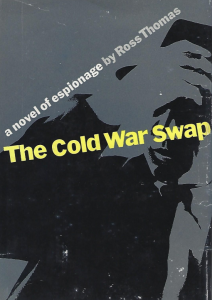
Ross Thomas, Cyril “Mac” McCorkle Series
Total Number of Series Installments: 4 (more or less)
First Novel Published: The Cold War Swap, 1966
Last Novel Published: Twilight at Mac’s Place, 1990
So this one is admittedly a bit of a stretch, since Mac McCorkle is less a series lead than a recurring and welcome character, and also Ross Thomas is better known, as far as series go, for the Philip St. Ives criminal-broker series, and also because Thomas is even better known for some of his stand-alones, like Briarpatch, which don’t really feel like stand-alones but rather like entries into a particularly corrupt and cynical world of fire-breathing politicos, but…this is just to say that Thomas was writing damn good novels back in the 1960s, too. He captured the political moment as only he could. McCorkle is a globe-trotting barman, a former special ops hand who finds himself entangled in one Cold War distinct mess after another. Thomas brought a bitter edge to the international geopolitics of the day, and his Sixties novels are well worth a read. (DM)
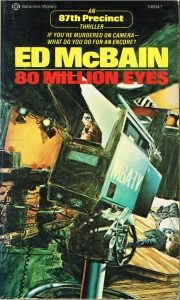
Ed McBain, 87th Precinct Series
Total Number of Series Installments: 55
First Novel Published: Cop Hater, 1955
Last Novel Published: Fiddlers, 2005
Oh, the heroes of the 87th Precinct…what would they make of today? Surely they’d be out on the front lines, keeping people safe and trying to keep each other safe on the way. For those who need to remember that NYC was not always a ghostly town of sirens and miasmas, the 87th Precinct is a perfect place to be. Featuring an ensemble cast that was (probably) ripped off by Hill Street Blues, McBain’s series is even more adaptable to the times than others on this list, although Steve Carella is the lynchpin of the series, along with his growing family and relationships with his partners. More than any other series from the 60s, McBain’s 87th Precinct novels shaped the landscape for police procedurals for decades to come (and also owed its own debt to Dragnet). As one of the longest-running series on this list, this one is also sure to kill as much time as you need killed. Then you can follow it up by watching Hill Street Blues and shaking your head at the injustice of it all.
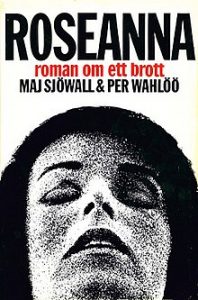
Maj Sjowall and Per Wahloo’s Martin Beck Series
Total Number of Series Installments: 10
First Novel Published: Roseanna, 1965
Last Novel Published: The Terrorists, 1975
Maj Sjowall and Per Wahloo are basically the Eloise and Abelard of crime fiction (minus the castration). Per Wahloo was already an established writer when he and his partner Maj Sjowall began writing crime novels in the 1960s, and had left his wife to be with the much younger Maj, who embraced the same social principles as he did. Their crime careers may have begun as a weird couples game when they speculated how to kill off an attractive woman both saw on a boat, but soon turned into one of the most clear-sighted and conscientious series of a decade defined by its social change and activism. After Wahloo died, Sjowall continued to work as a translator, but never wrote another crime book again.
Martin Beck, the series protagonist, is a rather staid character. He sleeps on the couch, but would never think of leaving his wife; he loves his teenage daughter, but has no idea how to understand her; he serves as a foil for his younger, more daring colleagues; he constantly suffers from colds. And of course, he doggedly and successfully investigates crime after crime, each opening a window into some part of Swedish society that the authors wished to critique.
Bits of the outside world poke through as the series continues—at the beginning of The Laughing Policeman, all the cops are trying to avoid working a protest against the Vietnam War, and in The Man Who Went Up in Smoke, a trip behind the Iron Curtain to Hungary leads to much shenanigans—but in general, this is the series that both brought Scandinavian crime fiction to the world and became the primary medium through which the world learned about Scandinavia (edging out Ingmar Bergman’s art-house cinema). However, the Martin Beck novels contained far more humor than the Scandi noir of recent decades—and far fewer serial killers.
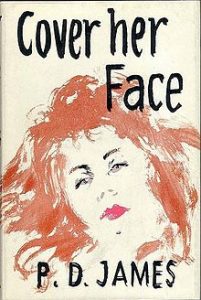
P.D. James’ Adam Dalgliesh Series
Total Number of Series Installments: 14
First Novel Published: Cover Her Face, 1962
Last Novel Published: The Private Patient, 2008
P.D. James’ poetry-loving detective Adam Dalgliesh was a family favorite while I was growing up, a character who emblemized the cerebral detective who keeps to himself, even while fulfilling his duties to the public diligently and successfully. He began as a Chief Inspector, then made his way up to Commander; his car switches from a Cooper Martin to a Jaguar half-way through the series, but otherwise little changes in the life of Dalgliesh, even as the world around him changes immeasurably. He remains single throughout the series—a colleague has an unrequited crush on him, but like Dalgliesh’s poetry, it’s the subject of gentle razzing in the department rather than a set-up for an eventual love affair. He has an elderly aunt, as private and cerebral as he is; most of the joy of reading the series comes from watching a brilliant and gentle professional steadily solve a complex murder. Dalgliesh also appears in two of James’ groundbreaking Cordelia Gray series, including the first to feature the pioneering private eye, An Unsuitable Job For a Woman.
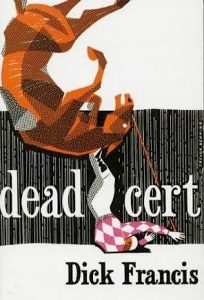
Dick Francis’ Racetrack Novels
Total Number of Series Installments: 70+
First Novel Published: Dead Cert, 1962
Last Novel Published: Crossfire, 2010 (written with son, Felix Francis)
While Dick Francis’ racetrack novels aren’t technically a series, in that each has a different protagonist, they are closely linked by their shared settings—former jockey Dick Francis knew the racing scene inside and out, including the many, many ways criminals could exploit it. My mother, born in ‘49 at the height of the baby boom, was primed to become a hippie, but before she was a hippie, she was a Horse Girl—the one thing she could draw with any consistency was a simple, elegant outline of a horse running, and she carried her love of horses throughout her life. My sister and I even took horseback riding lessons to impress her, although that backfired when my sister quit after a horse stepped on her foot, and I refused to ride anything other than a 30-year-old pony. She read all of Dick Francis’ racetrack mysteries, lined up in faded mass market editions on a white, particle-board bookshelf in her bedroom, shelves constantly collapsing under the weight of all the comfort reads she preferred to keep far from the eyes of visitors, and she read them over and over again. Later, years after she died, I read them too, in an effort to be closer to her, and I enjoyed every one. I recommend this series to Horse Girls everywhere, and their loving families. I promise, you won’t run out of new ones for a long time.

